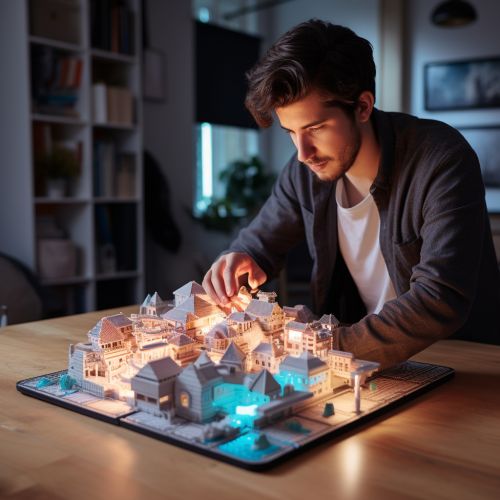Spatial Intelligence
Definition and Overview
Spatial intelligence, also known as visual-spatial intelligence, is one of the multiple intelligences identified by Howard Gardner in his theory of multiple intelligences. It refers to the ability to mentally visualize and manipulate objects, spaces, and dimensions. This form of intelligence is vital in various fields such as architecture, engineering, and the visual arts.


Understanding Spatial Intelligence
Spatial intelligence involves several interconnected abilities. These include the capacity to perceive the visual world accurately, to perform transformations and modifications upon one's initial perceptions, and to be able to recreate aspects of one's visual experience, even in the absence of relevant physical stimuli.
Individuals with high spatial intelligence have the ability to think in three dimensions. They can visualize objects from different angles and perspectives, and they can imagine changes to these objects or spaces. This ability is not limited to the visual domain and can also involve the spatial orientation of the body in space.
Components of Spatial Intelligence
Spatial intelligence is composed of several distinct but related abilities:
Spatial Perception
Spatial perception refers to the ability to understand and interpret spatial relationships between objects. This includes understanding the orientation of objects in relation to each other and the observer, and the ability to perceive changes in spatial relationships as objects move.
Mental Rotation
Mental rotation is the ability to rotate mental representations of two-dimensional and three-dimensional objects. It is considered a primary function of spatial intelligence.
Spatial Visualization
Spatial visualization involves the complex multi-step manipulation of spatially oriented information. It includes the ability to visualize and manipulate shapes, figures, and objects in the mind's eye.
Spatial Relation
Spatial relation is the ability to understand the relationship of objects in space. This includes understanding how an object is oriented in space, and how changing the orientation of one object affects the relationship between it and other objects.
Measurement of Spatial Intelligence
Spatial intelligence can be measured through various tests and assessments. These include the Mental Rotations Test (MRT), the Purdue Spatial Visualization Test (PSVT), and the Differential Aptitude Test (DAT). These tests typically involve tasks such as mental rotation of objects, spatial visualization, and spatial relation tasks.
Spatial Intelligence in Everyday Life
Spatial intelligence plays a crucial role in everyday life. It is used in simple tasks such as reading a map or packing a suitcase, and in more complex tasks such as solving a puzzle or designing a building.
In the field of education, understanding a student's spatial intelligence can help in developing teaching methods and materials that cater to their learning style. For example, students with high spatial intelligence may benefit from visual aids and hands-on learning experiences.
In the professional world, spatial intelligence is particularly important in fields that involve spatial reasoning and visualization. These include architecture, engineering, and the visual arts. However, it is also important in other fields such as medicine, where doctors need to visualize the human body in three dimensions, and in sports, where athletes need to anticipate the trajectory of a ball or the movement of other players.
Enhancing Spatial Intelligence
Spatial intelligence, like other forms of intelligence, can be enhanced and developed. Activities that can help improve spatial intelligence include playing with construction toys, drawing, painting, and playing video games that involve spatial reasoning. Training in fields that heavily rely on spatial intelligence, such as architecture or engineering, can also enhance these skills.
